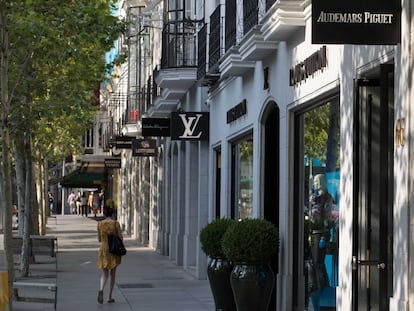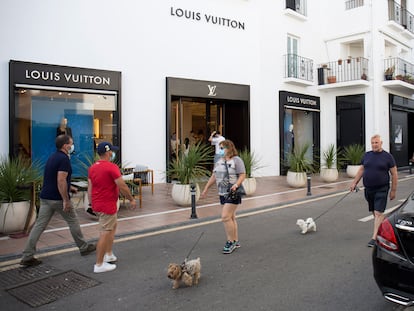Punta Mita: A private peninsula that’s become a coronavirus bolthole for the ultra-wealthy
In this remote corner of Mexico, a clutch of villas and two hotels are inspired by indigenous architecture with touches of luxury beyond the reach of all but the select few
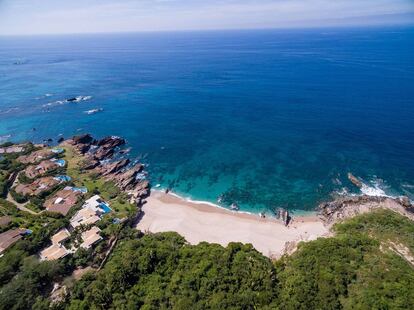
Punta Mita is a private peninsula where the pick of the elite have taken refuge from the coronavirus pandemic. With its two luxury hotels and residences with price tags that only the wealthiest can afford, it has become a coveted retreat on one of the most protected stretches of the Mexican Pacific coast, at the north end of Banderas Bay.
Barely a 15-minute drive from the bustle of Puerto Vallarta, one of Mexico’s main tourist destinations, it lies at a bend in the road that starts at Vallarta’s famous Malecón boardwalk, in front of the popular resort Isla Iguana, and runs north along the coast, through the picturesque neighborhoods of Mezcalitos, Villas de Vandera, Los Amores and Mesa Quemada – a short journey that also affords views of La Manzanilla beach. Here, before reaching the white sandy beaches of Punta Negra and Playa Lobo, is the enclave that champion golfer Jack Nicklaus defined as “heaven on Earth.”
Nicklaus was still playing golf when he began to frequent the peninsula in the late 1990s. Later, in 2005, local developers invited him to design what is generally considered to be one of the best golf courses in Latin America, putting at his disposal 200 acres of land overlooking the sea. The Ohio golfer came up with two twin circuits with 18 holes each, named Bahia and Pacifico. Five of the holes are a stone’s throw from El Faro beach, which is frequented by surfers and often finds its way onto Instagram. Another two holes can be found at the top of a gentle slope, which offers magnificent views during winter of humpback whales migrating south.
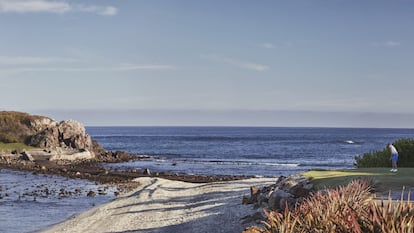
Besides designing a par-72 course suitable for both beginners and experts, Nicklaus went out on a limb and added hole 3B, also known as the Tail of the Whale – the only green in the world to be found on a natural island. At low tide, it can be reached by a narrow path. As soon as the sea level rises, golfers enjoy the unusual luxury of playing golf surrounded by the Pacific Ocean.
During the pandemic, Nicklaus’s twin courses have been busier than ever, despite the fact they are for the exclusive use of residents and their guests. The size of the community has swelled in recent months as its members, coming mostly from the south and west of the US, have elected to spend the lockdowns taking advantage of its amenities, outdoor leisure activities and relaxed but effective social-distancing protocol. The complex even has a private hospital, opened in June 2017, which, according to one of its directors, Dr Sam Najmabadi, is one of the most advanced medical centers not only in the state of Nayarit, but also in the whole of Mexico – a state-of-the-art facility to rival the best hospitals in the US.
The two hotels here are the Four Seasons Resort and the St. Regis, which belongs to the Marriott hotel chain. There are also 54 villas grouped in 16 exclusive residential communities. Few but Hollywood stars, top Silicon Valley executives and other members of the uber-rich elites in the US, Mexico and beyond can meet the cost of buying or renting some of these homes, such as Casa Aramara or Villa Tesoro. In fact, the community consists of a very small group of billionaires who share a six-square-kilometer stretch of land and coves such as La Solana and Playa Cuevas among an unimaginable concentration of infinity pools and other luxuries.

Last July, the model Chrissy Teigen and her partner, musician John Legend, let it be known via social networks that they had rented the highly coveted Villa Tesoro, a compound consisting of seven semi-detached suites that costs around $8,500 per night in low season.
Meanwhile, Casa Aramara – owned by the controversial film producer Joe Francis, whose convictions include assault and tax evasion – has played host to celebrities such as Eva Longoria, Demi Moore, Jennifer Aniston and several members of the Kardashian family, starting with Kim, who celebrated her honeymoon here with Kanye West in the spring of 2014. In fact, the Californian model and reality star has helped to usher Punta Mita into popular culture via her mobile game called Kim Kardashian: Hollywood, which is as close as most of us will come to experiencing its beauty and opulence.
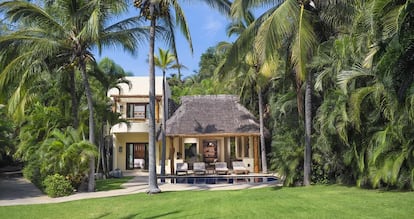
As Miguel Peregrina, the PR chief for the Four Seasons Resort in Punta Mita explains, in the last few months the complex has specialized in clients with deep pockets who are looking for a healthy refuge from Covid-19. “The average stay has risen from around nine days to more than 23,” he says.
The resort, which looks like a lavish Mexican country estate that blends with its surroundings, kept its doors open even during the worst of the pandemic’s first wave, thanks to the privacy of its residences. “Some of the guests have spent the entire period of lockdown here,” says Peregrina. “We have one resident in particular who settled into one of our residences in February. She suffers from multiple sclerosis and has found the safety, health standards and healthcare she was looking for here, so she has decided to stay for the time being.”
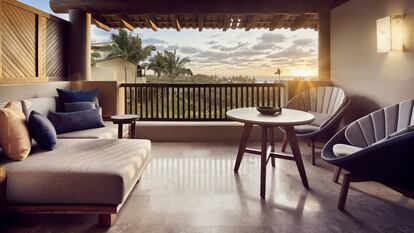
According to Californian journalist Sheila Marikar, the Four Seasons also offers a complete educational program, dubbed Schoolcations, which is open to children of the peninsula’s residents and which is based on the holistic philosophy of Rudolph Steiner. Coordinated by Stephanie Coufal, an educator who has lived on the peninsula for 10 years, the program now has more than 30 students who strictly observe social distancing even while enjoying plenty of interaction.
When possible, classes are held outdoors, where the students learn anything from local species of turtle to artisanal fishing techniques in Las Marietas, a small group of volcanic islands close by that were a source of fascination to the explorer Jacques-Yves Cousteau and became a natural park with restricted access four years ago.

As Miguel Peregrina explains, until 20 years ago Punta Mita was almost virgin territory – a pristine stretch of coast near Puerto Vallarta scattered with small fishing villages that have been turned into the most luxurious community in Latin America.
The Four Seasons was drawn to the location by its potential to provide a beautiful and safe, isolated environment in Mexico with enough going for it to attract a group of regular guests. Of particular interest to the hotel chain, which has its headquarters in Toronto, was the possibility of establishing a gated community with enough space to expand in the medium term.
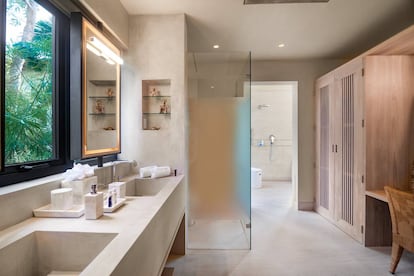
In less than a decade, between the arrival of the first real estate developers and the inauguration of the Nicklaus golf course in 2009, Punta Mita had become equipped with top sports facilities and some of the most upmarket villas along the Mexican coast without sacrificing the beauty and spirit of the natural environment, according to Peregrina.
The location of both the Four Seasons Resort and the St. Regis hotel is, in his words, “the most rugged part of the peninsula with the most interesting topography” with direct access to three unspoiled beaches – Playa Cuevas, Playa Manzanillas and Playa La Solana.

The project’s design was inspired by the Mexican Diego Villaseñor, whom Forbes considers one of the best residential architects in the world. Other big names in the worlds of architecture and interior design have also been involved, such as the Mexican duo Ofelia Uribe and Erica Krayer, Kollin Altomare Architects, Vita Planning & Landscaping Architecture and Anderson Miller Studios.
Villaseñor’s vision entailed incorporating the traditions of the two most important indigenous groups in the state of Nayarit – the Cora and the Huichol – into the general design of the Four Seasons Resort. He was also keen to highlight the “beauty, magic and mystery” of the natural environment and remained faithful to his commitment to a contemporary style inspired by nature.
Villaseñor’s architecture is one “with roots” that aims to step outside “the current trend of an increasingly homogeneous world, rescuing and reinterpreting local identities, new and old, yet without settling for past answers to present problems.”
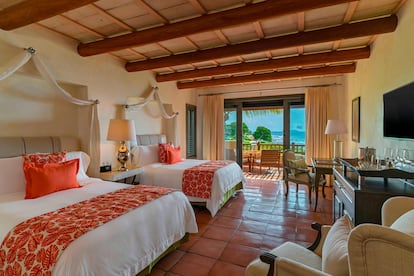
The resort is now embarking on a gradual renovation that will take around four summers to complete, according to Peregrina. Summer is low season in Punta Mita due to the heat and humidity and it is the perfect time to focus on improvements consistent with Villaseñor’s vision 20 years ago.
“We are not just using local materials, but also local construction techniques,” says Peregrina, noting that tropical wood such as parota or huanacaxtle are given preference, as well as items crafted from copper typical of the region, local glass and other elements that are deeply rooted in local tradition. The Four Seasons will complete five additional buildings, a new communal pool and refurbish two of the four presidential suites, which are currently dubbed Beach Houses.
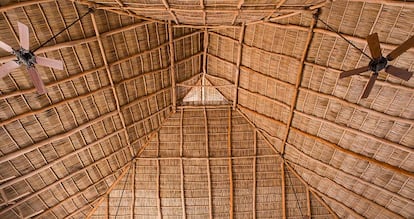
The St. Regis hotel is also steeped in the kind of eccentric luxury that characterizes Punta Mita. According to journalist Sheila Marikar, it offers its residents the possibility of hiring a private butler. Two years after it opened in 2008, the St. Regis was awarded the Five Diamond designation from the prestigious American Automobile Association, which has been a stamp of hospitality excellence for decades.
That same year, the Architectural Digest highlighted the work of its architect and interior designer, Mexican Roy Azar, defined as “daring, eclectic and avant-garde”, as well as being the winner of a Design Icons award for an interiors concept that has been described as “a cross between Provençal and Mexican influences.” Unique traditional Mexican crafts combine with exclusive pieces of furniture from Provence in France as well as Spain and Belgium. The resulting sophisticated rustic style is also due to the use of traditional fabrics such as linen, cotton and silk, as well as the hand-embroidered cushions at Las Marietas restaurant.
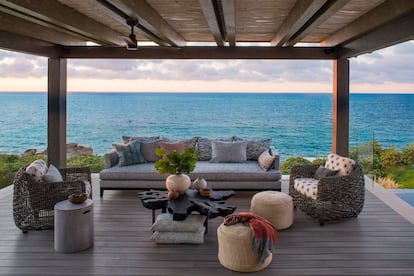
In this exquisitely luxurious environment, wealthy folks fleeing the pandemic are enjoying golf and other leisure activities, such as outdoor exercise routines, fishing, releasing sea turtles back into the wild, learning coral conservation techniques and whale watching. For foodies, the area around the Four Seasons alone has 14 bars and canteens and a total of five restaurants that offer traditional Pacific and Asian cuisine, snacks, grilled meat and fish and vegan options.
Peregrina also mentions that residents can branch out and explore the Riviera Nayarit, with visits to the Marietas and the villages of Sayulita and San Francisco – known as San Pancho to locals – which are prized by surfers and photographers for their magnificent waves. With no stone left unturned when it comes to combining the extravagance of pampering with the simplicity of nature, Punta Mita has been turned into an exclusive paradise in the ancestral homeland of the Huichols.
English version by Heather Galloway.
